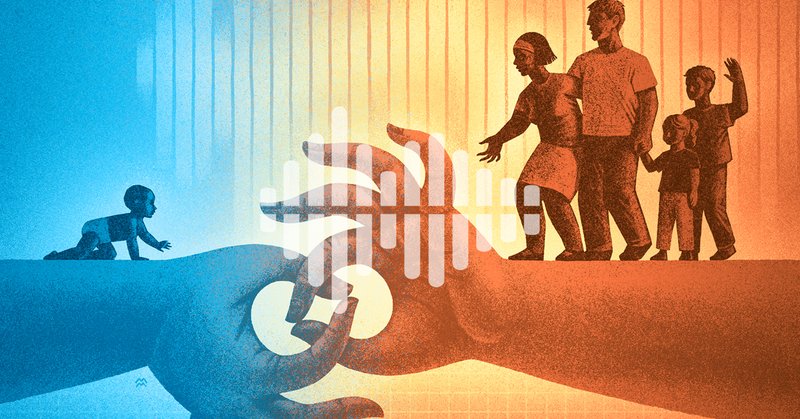
Francesca Fardo
@FrancescaFardo
Followers
2K
Following
5K
Media
22
Statuses
1K
Neuroscientist at @CFIN_AU • brain • spinal cord • pain and temperature perception
Arhus, Denmark
Joined January 2013
Excited to share our latest publication, out now in @ScienceAdvances: “Thermosensory predictive coding underpins an illusion of pain.” https://t.co/9HYIi0asFf. Read the full thread below for details!
2
15
50
Absolutely loved discussing our recent @NatMentHealth paper on @IhmCurious YouTube channel, thank you for having me! & to @micahgallen @BrainAndStomach & the @visceral_mind team for all their hard work on this project🧠 Open link to the paper: https://t.co/AKH3q33Qwl
New study from @visceral_mind finds a surprising link between stomach-brain synchrony and mental health. Congrats @LeahBanellis et al.! Interview here:
0
8
11
@EhmsenFischer @micahgallen To hear more about this work, check out my interview on the Science Podcast!
I had the pleasure of chatting with the brilliantly insightful Sarah Crespi on the @ScienceMagazine podcast about what it means to experience an illusion of pain based on https://t.co/9HYIi0asFf! Catch the full interview starting at 26:44. https://t.co/47wpujfQdt
0
0
2
I had the pleasure of chatting with the brilliantly insightful Sarah Crespi on the @ScienceMagazine podcast about what it means to experience an illusion of pain based on https://t.co/9HYIi0asFf! Catch the full interview starting at 26:44. https://t.co/47wpujfQdt
science.org
On this week’s show: U.S. science policy updates, cochlear implants give children unprecedented access to sounds, and fooling the body into feeling pain gives insight into chronic pain conditions
0
3
7
I'm deeply grateful to everyone who contributed! Especially first-author @EhmsenFischer and co-last author @micahgallen, whose brilliance, dedication, and generosity brought our vision to life in ways far beyond what a single tweet could capture!
1
0
1
Huge thanks to our funders @ERC_Research, @lundbeckfonden for supporting this project. Thanks also to @CFIN_AU without whom we could not have collected this data. This work was the result of incredible teamwork between the @bpplab_au and the ECG @visceral_mind.
1
0
3
Key takeaways: (1) the brain interprets sensations based on expectations, making harmless inputs painful when uncertainty is high. (2) Individual computational fingerprints during thermosensory learning reflect distinct brain microstructural correlates.
1
0
2
Using quantitative MRI, we linked thermal learning parameters to brain microstructure. Notably, decision temperature correlated with iron content in the Subnucleus Reticularis Dorsalis (SRD), a key structure in descending pain modulation.
1
1
2
In contrast, second-order uncertainty, reflecting how unsure you are about the precision of your own predictions, actually intensified the illusion of pain. This means that when thermal expectations are uncertain, the brain interprets these ambiguous stimuli as more painful!
1
2
3
We compared multiple computational models and found a two-level Hierarchical Gaussian Filter best explained our data. First-level uncertainty shaped temperature sensations: stronger expectations of cold amplified cold feelings, while stronger warm predictions enhanced warmth.
1
1
3
We manipulated uncertainty in two ways: (1) continuously changing cue-stimulus associations via probabilistic reversals; (2) introducing ambiguous trials combining harmless cool & warm stimuli, eliciting the "thermal grill illusion" of pain!
1
0
1
To answer this question, over 250 participants learned associations between auditory cues and warm or cold stimuli, and rated their experiences of cold, warmth, and pain.
1
0
1
We know expectations shape how we experience temperature and pain. But what happens when we're unsure what's coming next? Our key question: can uncertainty about expectations lead the brain to "mistakenly" perceive harmless temperatures as painful?
1
0
3
1/ We can measure interoception in many aspects, but can we actually manipulate it? I’m excited to share our new study, which shows that blockade of peripheral beta-adrenergic pathways improves cardiac and respiratory interoception in unique ways! 🧵👇 https://t.co/1zLNmHTsZv
2
20
58
Can we enhance interoception by controlling the heart? Thrilled to share our new study, led by @AshleyTyrer, where we use computational modeling to show that blockading peripheral noradrenaline uniquely alters awareness of heart rate & breathing! https://t.co/aTvBgzic8O 🧵👇
1
22
74
What happens when our stream of consciousness turns inward, towards the body? Our new fMRI study of 536 individuals finds that 'body-wandering' is associated with distinct patterns of brain connectivity, physiology, affect, and mental health: https://t.co/wepZGVCMXl
9
93
310
Happy to share our latest publication, out now in @CognitionJourn, where we find that metacognitive self-beliefs are updated in a suprisingly domain-specific manner. https://t.co/iWCCDUwXwW
1
34
136
We propose that six main mechanisms of neural #oscillations contribute to multi-timescale neural processing in multisensory (and unisensory) integration: Amplitude modulation, phase resetting, entrainment, phase-amplitude coupling, phase coupling; envelope coupling
9
116
542
👇Poster FR254 @IASPpain
Finally, don’t miss @EhmsenFischer! Rumor has it he’s a ‘crazy Norwegian who recoded the HGF in Stan.’ While he’s neither crazy nor Norwegian, the rest is spot on! Go find this brilliant Dane and ask him anything about computational modeling you’ve always wanted to know! #WC2024
0
0
5
Finally, don’t miss @EhmsenFischer! Rumor has it he’s a ‘crazy Norwegian who recoded the HGF in Stan.’ While he’s neither crazy nor Norwegian, the rest is spot on! Go find this brilliant Dane and ask him anything about computational modeling you’ve always wanted to know! #WC2024
0
1
7






